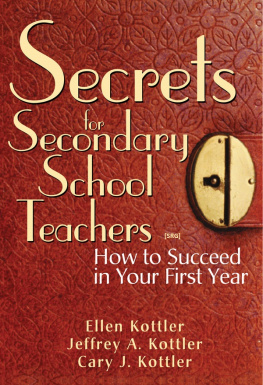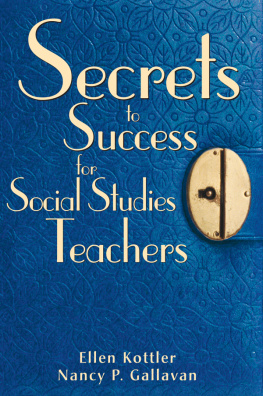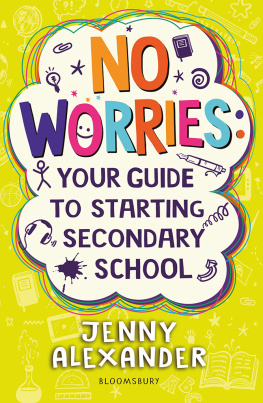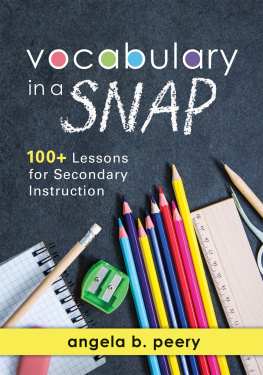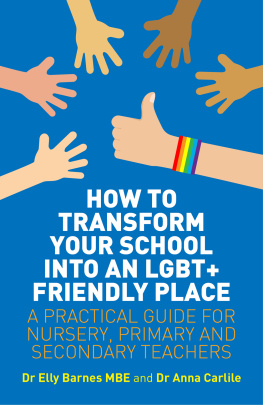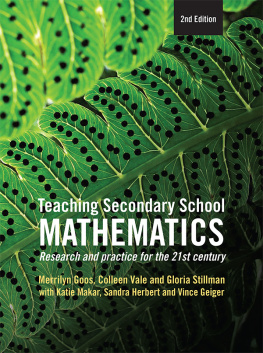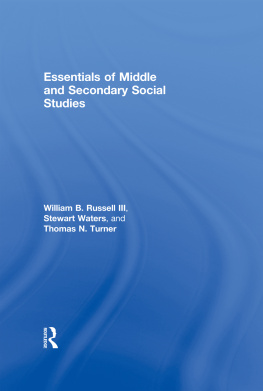Copyright 2004 by Corwin Publishing
First Skyhorse Publishing edition 2015
All rights reserved. No part of this book may be reproduced in any manner without the express written consent of the publisher, except in the case of brief excerpts in critical reviews or articles. All inquiries should be addressed to Skyhorse Publishing, 307 West 36th Street, 11th Floor, New York, NY 10018.
Skyhorse Publishing books may be purchased in bulk at special discounts for sales promotion, corporate gifts, fund-raising, or educational purposes. Special editions can also be created to specifications. For details, contact the Special Sales Department, Skyhorse Publishing, 307 West 36th Street, 11th Floor, New York, NY 10018 or .
Skyhorse and Skyhorse Publishing are registered trademarks of Skyhorse Publishing, Inc., a Delaware corporation.
Visit our website at www.skyhorsepublishing.com.
10 9 8 7 6 5 4 3 2 1
Library of Congress Cataloging-in-Publication Data is available on file.
Cover design by Michael Dubowe
Print ISBN: 978-1-62914-746-8
Ebook ISBN: 978-1-63220-119-5
Printed in the United States of America
Contents
Preface
E xcitement. Curiosity. Apprehension. No, make that terror ! These are just a few of the reactions that new teachers have as they anticipate their first year in the classroom.
The book work is done. The closely supervised field experiences and student teaching are over. No more taking tests or writing papersnow you are the one who gets to grade them!
You now have the freedom to organize your own life, away from the confines of the university. You will develop the lesson plans and implement them. Finally, you will start earning money doing something you hope you will truly love. You will be responsible for molding impressionable minds in positive directions. It will be so great, you think, creating the kind of classroom that you always wanted as a studenta place where real learning takes place, where kids have fun, where there is order and support, where differences are honored, and yet everyone works together as a team.
Certainly, you have seen enough from your classroom observations and field experiences to know that there is tremendous diversity in the ways that teachers organize their classrooms and their lives. You have seen chaos in actionteachers who are jokes in their schools, who earn little respect from their colleagues and even less from their students. You have observed other teachers throughout your life who are truly masters at their craft, absolutely brilliant in their abilities to win friends and influence people. A few of these individuals may even be responsible for your own decision to be a teacher.
Now you stand poised, ready to begin your own career as an educator. You dont want to be one of those teachers who is eaten alive, who burns out after a few yearsor even worse, who keeps teaching year after year, long after the point where he or she cares any longer about children and their learning. Neither do you want to be the kind of teacher who is average, who puts in the years, accumulates time in the retirement system, processes children like an assembly line, doing an adequate but undistinguished job. No, you want to be a great teacher.
Your dream can very well become a reality... if you make some sound decisions from the beginning. This means applying what you learned in your teacher education program in such a way that it is consistent with the realities of your particular school. It means catching on rather quickly to the innumerable traps and challenges you will face during your first year as a teacher. It means recruiting the right mentors who can support you along the way.
This book is intended to serve as one of your mentors, a handbook that you can consult periodically to prepare yourself for any of the usual challenges you are likely to face. It has been written by a teacher-administrator, a teacher-counselor-educator, and a student, specifically to reflect the realities of what most likely leads to success for beginning teachers.
We have brought together the most practical elements from your course work, from the education literature, and from the advice of master teachers to provide you with guidance during your first professional teaching position. The book includes tips and secrets that experienced teachers have developed to simplify, organize, and reduce the stress associated with the first year on the job. Many of the tips are illustrated with vignettes that show how they can be applied in action.
A series of brief, focused chapters addresses a number of topics that are absolutely critical for teachers. Beginning with the basics of orienting yourself to your school and classroom, we then provide specific and practical advice for not only surviving but flourishing during your first year of teaching. These issues include such things as getting to know students, parents, and community; captivating and holding student attention; organizing your room and learning your way around the school; developing lesson plans and assessments, dealing with sources of stress, such as being evaluated and dealing with difficult students; figuring out the culture of the school so you can make a place for yourself; and preparing yourself for all the things you needed to learn in school but somehow missed along the way. We cover pragmatic realities related to difficult students and colleagues, handling paperwork, networking with others for support, preparing for a substitute, dealing with disappointments and unrealistic expectations, as well as maintaining your enthusiasm and planning for your own future.
This edition features a new chapter, Developing Plans for Instruction and Assessment. It begins with a look at long-term planning and unit planning and then focuses on daily lesson planning. A suggested lesson plan format is presented and described. Attention is given to working with English-language learners, special needs populations, as well as literacy strategies for struggling readers. Next, formative and summative assessments are discussed along with traditional and alternative assessments. An A to Z list of assessments is provided. Both holistic and analytic scoring rubrics are presented. Finally, norm-referenced and criterion-referenced standardized testing is addressed.
Other additions are incorporated throughout the book. , includes a lengthy section on the National Board for the Professional Teaching Standards and a list of general education and specific professional organizations as resources. Additional technology suggestions are interwoven throughout the chapters.
Implicit in all of these topics is much of what you need as a beginning teacher, not only to succeed in your new profession, but also to flourish. As you are probably already aware, a significant number of new teachers, even those with tremendous passion, commitment, and enthusiasm, still struggle mightily in their first year of practice. Half of new teachers leave the classroom altogether within their first five years, so dispirited and frustrated with the realities for which they were unprepared.
This book is written for new teachers, as well as those who are in the midst of their education and training. Although the suggestions and structures we offer are based in research and practice, this manual is intended to be practical above all else. It provides you with all the little (and not so little) things that will help you to do your job in such a way that you make your classrooms fun, interesting, and challengingnot only for your students but for yourself. Because if you are not having fun working as a teacher, youre probably not doing it right!

